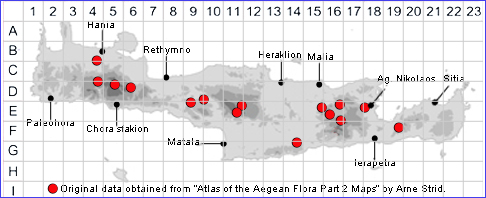SPECIES DESCRIPTION
MEDICAGO LUPULINA
Family and Genus:- See- LEGUMINOSAE/Subgen. MEDICAGO
Common Names:- Black medick, nonesuch
Homotypic Synonyms:- Lupularia parviflora, Lupulina aurata, Medica lupulina
Medicula lupulina, Melilotus lupulinus, Trifolium lupulinum.
Meaning:- Medicago (Gr) Median-grass, A name used by the Greek physician
and botanist Dioscorides, from a Persian name for lucerne, or medick.
Lupulina (L) Hop-like, with the rampant habit of hops.
General description:- More or less pubescent annual or short-lived perennial.
Stem:- Generally 15-40 cm. prostrate to ascending.
Leaves:-
1) Leaflets, obovate, rounded to truncate, dentate-serrate in front, subappressed-
pilose.
Flower:-
1) Peduncle, slender, much exceeding the petiole of the subtending leaf.
2) Inflorescence, capitate, usually 10-20-flowered, somewhat elongating in fruit.
3) Corolla, 3-4 mm, yellow.
Fruit:-
1) Legume, small (1.5-3 mm), reniform, 1-seeded and indehiscent, without spines,
with curved, slightly anastomosing veins, usually pubescent, blackish when ripe.
Key features:-
1) Legume, up to 3 mm ± falcate or reniform. margin with one longitudinal vein.
2) Seed, solitary.
Habitat:- Damp to dry pastures, evergreen and deciduous scrub, open coniferous
woodland, field margins. 0-900(2100) m.
Distribution:- A widespread Euro-Siberian species, frequently naturalised
elsewhere. Limited distribution on Crete, mainly around the three main massifs.
Flowering time:- Apr-July.
Photos by:- Giorgos Zarkos

